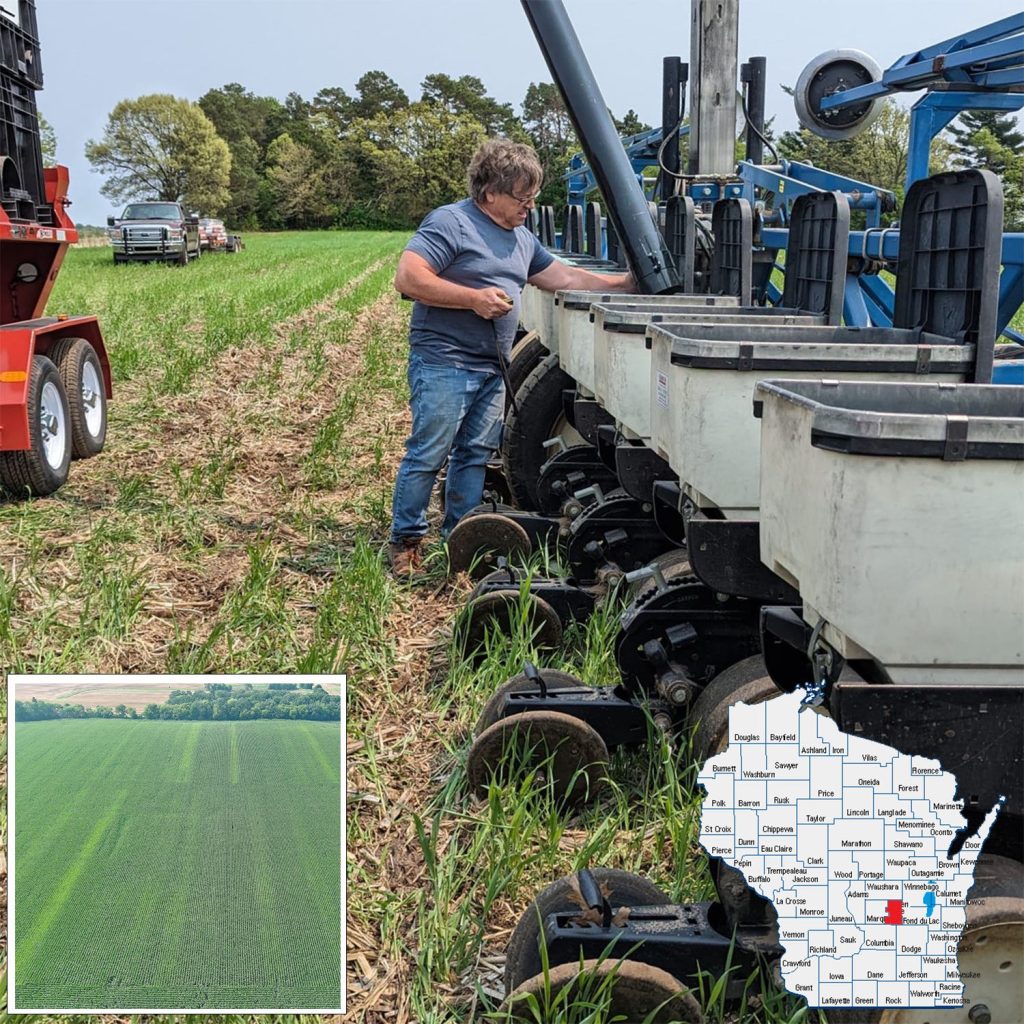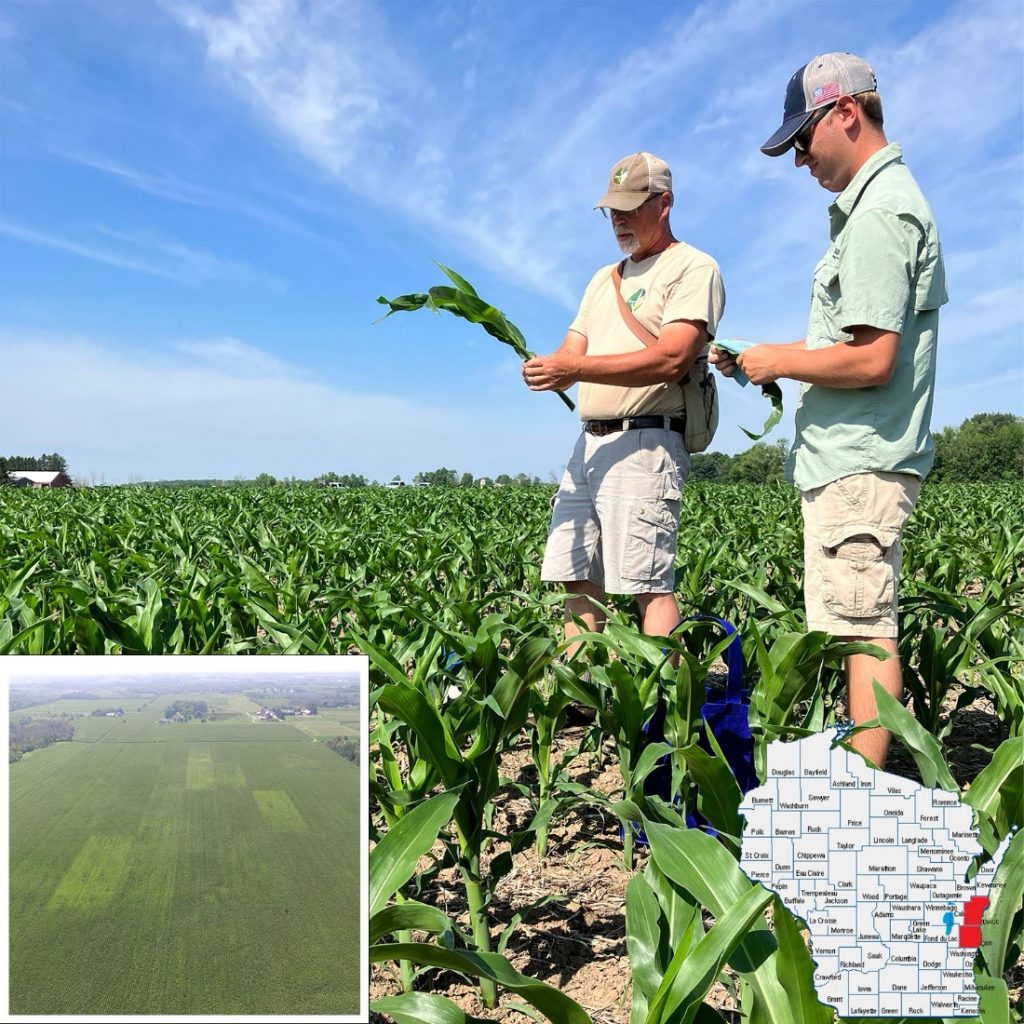The Commercial Nitrogen Optimization Pilot Program (NOPP) is a grant program funded by the State of Wisconsin, administered by the Wisconsin Department of Agriculture, Trade and Consumer Protection (DATCP), and supported by the University of Wisconsin–Madison Department of Soil Science and Division of Extension. These grants aim to refine and enhance the understanding of methods that optimize commercial nitrogen applied to agricultural fields, helping to protect vital soil and water resources. Read below to hear what Wisconsin farmers are investigating with their NOPP funding!
Novak (Soil Types)
Tom Novak is a 2023 Nitrogen Optimization Pilot Program grant recipient evaluating corn MRTN rates on coarse vs loam soil types. Novak had this to say about his long history of on-farm research and why it’s important to keep asking questions!
“Back in the late 90’s I teamed up doing N rate trials with our Jefferson County Crops & Soils agent – Matt Hanson – and we continued trials for the next 10 years. One of the results was it taught us that being efficient with N use (side-dressing) was extremely important when discussing what the “correct” N rate should be. This decade of trials also showed us the UW-recommended rates were adequate. However, some things like non-responsive trials nagged at us and we never got the “why” figured out.
Flash forward to the present day and with a good funding source in place we can run different tests like preplant N, pre-sidedress N, ear leaf samples, etc. that were too expensive when we had no budget! This will help us understand the “why” when odd things happen. The new twist over this two-year project is beyond getting yield data over 6 N rates, I’m comparing light sandy loam soils to some black loam soils to see if optimum N rates at each yield level is the same, or if not, can we get by with less N on lighter/droughty soils as some variable rate models suggest.”

Hebbe
Jim Hebbe is a 2023 Nitrogen Optimization Pilot Program grant recipient evaluating a biological nitrogen product in maintaining corn yield. When asked why he chose to apply for a grant to study this topic, Jim said it had a lot to do with lack of available research:
“My normal source of info for a lot of farm decisions starts with UW. So I contacted our local Extension Educator, Natasha Paris, and asked what the university is saying about Pivot Bio PROVEN® 40. Unfortunately, there wasn’t any university research to help make a good decision. All of a sudden, the NOPP grant was announced, and we thought this would be a wonderful thing to do. Natasha provided the support and confidence that we could do this together.”
The responsibility of using nitrogen efficiently is something that Jim takes very seriously: “I’ve worked with Matt Ruark through the years on nitrogen plots on our farm and always thought this was a good thing to do. We drink our groundwater too and we certainly don’t want to be overapplying nitrogen. It’s exciting to think that, if a product like [Pivot Bio PROVEN® 40] can and will work, I love the idea of 40 units of nitrogen that isn’t needing to be produced with fossil fuel. We want to have confidence that things are done correctly. With myself being the consumer of nitrogen, I’m going to be critical of decisions and use of nitrogen because I’m the stakeholder.”

InDepth Agronomy
Soaring Eagle Dairy and Majestic Crossing Dairy are 2023 Nitrogen Optimization Pilot Program grant recipients and are collaborating with InDepth Agronomy on their project to evaluate corn nitrogen rates.
The soils in some areas of Eastern Wisconsin contain a higher clay content than most other areas of Wisconsin which can make nitrogen difficult to manage. This soil characteristic is what inspired these two farms to fine-tune nitrogen rate recommendations and evaluate several in-season nitrogen measurement tools.
A goal was set on this multi-year research project: for the research design and execution to fit in seamlessly with each farm’s day-to-day operations. To meet this goal, the farms leveraged precision agriculture technologies that were already being used on their operation. The randomized complete block design research plots were installed using variable rate fertilizing prescriptions either as a single pre-plant application, or as a several applications throughout the year. These large plots allowed for normal planting and combining operations without specific regard to the location of the plots. The yield data is currently being analyzed and we look forward to sharing the first-year results.
In addition to determining optimum nitrogen rates for corn yield, the research design also evaluates several in-season nitrogen management tools such as: NDVI, GreenSeeker, PSNT, PPNT, Tissue Testing, and Stalk Nitrate sampling. The farms hope to narrow in on several tools that have a strong predictive measurement of corn nitrogen needs to scale this research across their farm.





